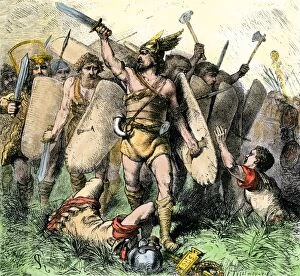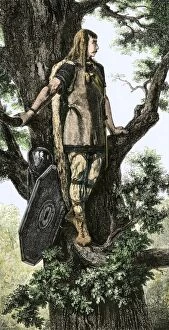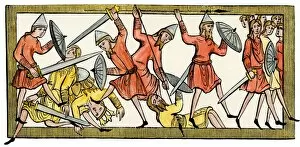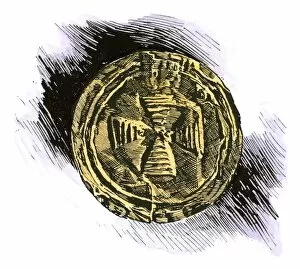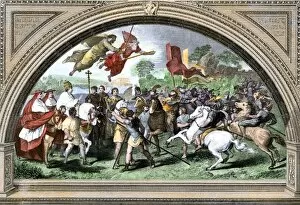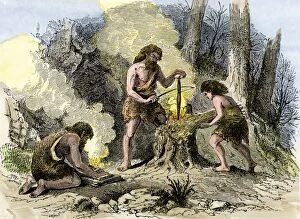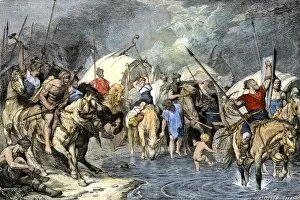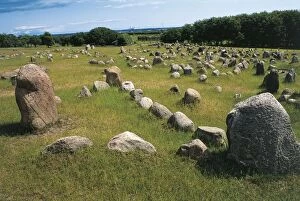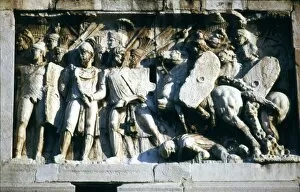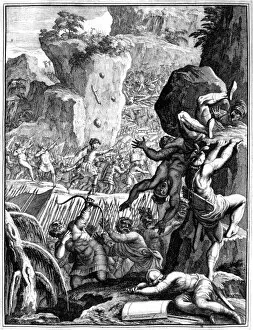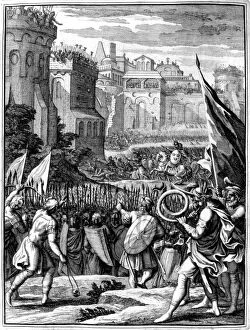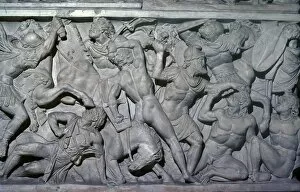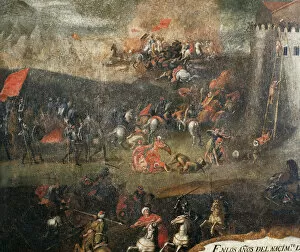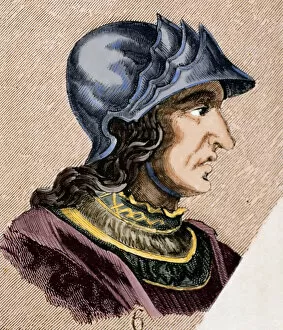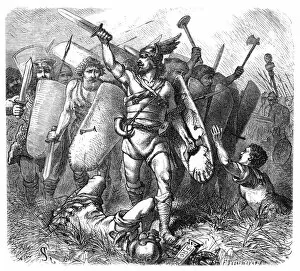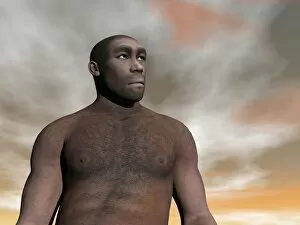Barbarian Collection (#6)
"Unleashing the Barbarian Spirit: A Journey through Ancient Times" Step back in time to witness the ferocity and bravery of the barbarians that shaped history
For sale as Licensed Images
Choose your image, Select your licence and Download the media
"Unleashing the Barbarian Spirit: A Journey through Ancient Times" Step back in time to witness the ferocity and bravery of the barbarians that shaped history. From the British tank roaring across the Western Front during World War 1, reminiscent of their ancestors' indomitable spirit, to the gleaming Celtic bronze swords wielded by fearless warriors. Amidst ancient rituals, a Druid carries mistletoe, a sacred symbol of power and healing. These mystical figures were revered for their connection with nature and wisdom. In another era, Viking raids under Olaf I sent shivers down coastal settlements as they sought glory and riches. The fall of Rome in 476 marked a turning point as Romulus Augustulus faced his demise at the hands of Odoacer. Witness this historic event through a wood engraving from the 19th century, capturing both triumph and tragedy. Delve into Celtic culture with its intricate sun-wheel on an Irish quern - a testament to their craftsmanship and spiritual beliefs. Visigoths joining forces with Romans against formidable Huns at Chalons showcase unity amidst chaos. Gather around as storytellers recite Viking sagas filled with epic battles and legendary heroes who etched their names in history's annals. The Vikings' audacious attack on Paris in 885 AD left an indelible mark on France's capital city. Immerse yourself further into these ancient worlds by encountering individuals dressed in traditional Celt or Finnish attire – embodying centuries-old traditions that have endured through time. Join us on this captivating journey where we unravel tales of conquests, valor, mysticism, and cultural heritage – reminding us that even amidst chaos lies untamed beauty waiting to be discovered within our shared human history.


